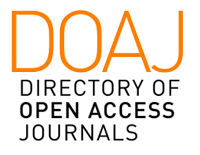[GW28-e0097]
Application of genome-wide microarray analysis technology to explore the neuroprotection mechanism of hypothermia after cardiopulmonary resuscitation
Dezhi Zou Xuan Dai Chunlin Hu
The First Affiliated Hospital, Sun Yat-sen University, Emergency Department
Objectives: Hypothermia is one of the most robust experimental neuroprotective interventions against cerebral ischemia. Identification of molecular pathways together with single genes or gene families that are significantly associated with neuroprotection might help unravel the mechanisms of therapeutic hypothermia.
Methods: Total of 20 healthy adult male Wistar rats, were randomly divided into 4 groups, sham-operated plus nonthermia (NT1)(n=4), sham-operated plus hypothemia (NT2)(n=4), return of spontaneous circulation (ROSC) after ventricular fibrillation(VF) plus nonthermia (CPRT1)(n=6), ROSC after VF plus hypothemia (CPRT2)(n=6). 12 of CPRT were induced VF by an external trans-thoracic alternating current. After 7 minutes cardiac arrest, the animals received 2 minutes cardiopulmonary resuscitation and then defibrillation until ROSC. The animals in NT1 and CPRT1 Placed in the constant temperature box at 37oC and maintained esophageal temperature at 38 oC. The animals in NT2 and CPRT2 were treated by surface hypothermia, and maintained for 2 hrs of target temperature between 33 oC to 35 oC. The animals were sacrificed after ROSC 2h, the cerebral cortex were removed, then the RNA of samples were processed in extraction, quality inspection, purification and amplification. Data collection, inspection and analysis after The Mouse Genome Microarrays hybridization reaction. The gene expression profile of NT1, NT2, CPRT1, and CPRT2 were compared by analyzing changes of individual genes and pathways.
Results: All samples showed high consistency, and integrity of RNA sample was qualified. The microarray hybridization reaction process was good. The normalized data shows approximate normal distribution. The data of compare of two groups (P < 0.05) indicates differentially expressed genes in common. CPRT1 versus NT1, of 227 genes present on the array chip(p<0.05), compared with upregulated 150(66.1%) genes and down regulated 77(33.9%) genes equal or greater than twofold. CPRT2 versus NT2, of 108 genes present on the array chip(p<0.05), compared with upregulated 76(76.1%) genes and downregulated 32(33.3%) genes equal or greater than twofold. NT2 versus NT1, of 138 genes present on the array chip(p<0.05), compared with upregulated 96(69.6%) genes and downregulated 32(30.4%) genes equal or greater than twofold. CPRT2 VS NT2 compared with CPRT1 VS NT1, NT2 VS NT1 compared with CPRT2 VS CPRT1, there are 8 and 6 difference expression genes in common, respectively. Genes implicated in hyphothemia displayed significantly differential expression, such as p21, 14-3-3-sigma, GADD45, BDNF, c-fos, HSP72, c-JUN, Nur77, CXCL2, CCL3, IL4 and TSLP. On the pathway level, the MAPK signaling pathway and Cytokine-cytokine receptor interaction pathway in CPRT2 VS NT2, likewise the P53 signaling pathway in CPRT1 VS NT1, were identified to be significantly altered (p<0.05, fc>=1.5). The most significantly altered pathways contained genes above participating in cell cycle arrest, proliferation, differentiation, apoptosis and inflammation.
Conclusions: Our data suggest that Inflammation pathway, P53 apoptosis pathway and inflammatory factor receptor pathways that connected with MAPK, were associated with neronal injury after cardiopulmonary resuscitation. Hypothemia has remarkable effect on the expression of several of genes related to these pathways, which affect inflammatory response, apoptosis and cell inflammatory factor receptor mediated neronal injury pathways after CPR, thus play a role of neuroprotection.














